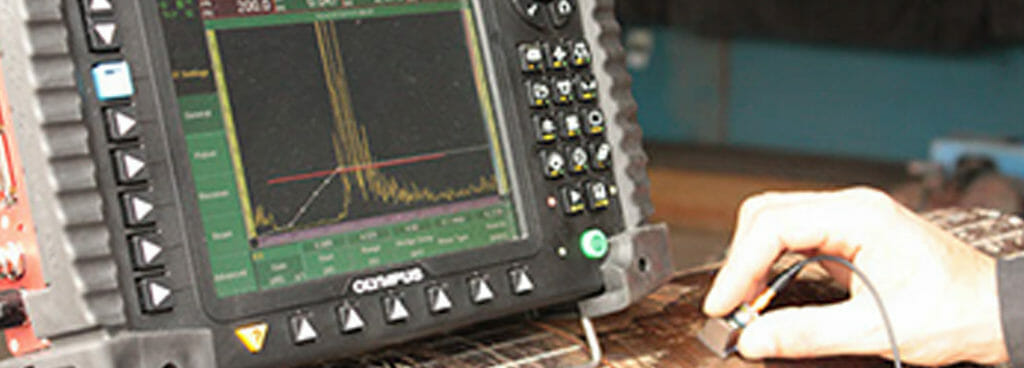Why You Need Expert Welding Inspection Racine for Your Projects
Wiki Article
Innovative Methods to Fillet Weld Assessment and Testing: Enhancing Weld High Quality and Conformity Standards
In the world of welding, the quality and integrity of fillet welds play an important function in making sure the architectural strength and dependability of numerous commercial parts. With the constant drive for enhanced efficiency and compliance with rigorous requirements, the expedition of cutting-edge methods to fillet weld assessment and screening has actually become vital. As sectors advance, the traditional methods might no much longer suffice in meeting the demands of modern welding applications. By accepting sophisticated modern technologies and approaches, a new horizon of possibilities arises in the realm of weld quality analysis and adherence to conformity criteria.Advanced Non-Destructive Testing Techniques
Making use of state-of-the-art technologies, advanced non-destructive testing approaches play a critical duty in guaranteeing the stability and quality of fillet welds. These methods, such as phased range ultrasonic testing (PAUT) and magnetic particle testing (MPT), deal comprehensive understandings into the weld's interior structure without creating any kind of damage to the material. PAUT, as an example, makes use of multiple ultrasonic components to inspect the weld from different angles, giving an extensive visualization of prospective defects like absence of blend or fractures.By utilizing these innovative non-destructive screening strategies, weld inspectors can accurately analyze the quality of fillet welds, ensuring compliance with sector requirements and policies. The ability to find defects early on not just boosts weld quality but likewise protects against costly rework or failings in architectural honesty, highlighting the significance of these innovative testing approaches in welding inspections.
Robotics and Automation in Assessment
The integration of robotics and automation has actually changed the inspection process for fillet welds, enhancing effectiveness and precision in quality analysis. Robotics use accurate control and repeatability in checking welds, ensuring trusted and constant results. Automated systems can be programmed to adhere to specific assessment paths, guaranteeing complete insurance coverage of welds and lowering the danger of human mistake.Robot assessment systems outfitted with sophisticated sensors can find and gauge weld features with high precision, offering in-depth data for analysis. These systems can recognize flaws such as cracks, lack of blend, and porosity, making it possible for timely restorative actions to be taken. Additionally, robotics and automation permit for real-time data collection and analysis, giving instant responses to operators and assisting in quick decision-making processes.
Furthermore, making use of robotics and automation in fillet weld inspection boosts total performance by lowering assessment times and boosting evaluation throughput. By improving the assessment process, suppliers can ensure weld high quality and conformity standards are fulfilled successfully, ultimately bring about cost financial savings and improved product top quality.
Using Artificial Knowledge for Analysis
Expert system plays an essential duty in enhancing the performance and accuracy of analysis in fillet weld inspection processes. By taking advantage of the power of AI, inspectors can enhance the analysis of weld high quality and conformity standards, bring about much more accurate and reliable outcomes. AI algorithms can rapidly process large quantities of information published here from weld assessments, discovering flaws or inconsistencies that may be challenging to understand the nude eye. This innovative modern technology allows real-time surveillance of weld high quality, permitting prompt rehabilitative activities to be taken if any kind of issues are discovered.Additionally, AI systems can find out from previous assessment information, continuously boosting their capability to identify potential issues and deviations in fillet welds. This flexible learning ability boosts the general quality assurance procedure, lowering the chance of human mistake and ensuring that welds satisfy the needed standards. By incorporating synthetic intelligence into fillet weld analysis, sectors can achieve higher levels of performance, uniformity, and compliance in their examination techniques.
Portable Devices for On-Site Examination
 Enhancing field evaluation performance, the fostering of mobile devices transforms on-site assessment procedures for fillet welds. These devices supply flexibility and comfort, enabling assessors to conduct extensive exams in various locations, including remote or difficult settings. Portable tools such as ultrasonic testing tools, magnetic bit assessment tools, and electronic radiography systems give real-time data and high-resolution imaging capacities, enabling fast decision-making and immediate feedback on weld quality.
Enhancing field evaluation performance, the fostering of mobile devices transforms on-site assessment procedures for fillet welds. These devices supply flexibility and comfort, enabling assessors to conduct extensive exams in various locations, including remote or difficult settings. Portable tools such as ultrasonic testing tools, magnetic bit assessment tools, and electronic radiography systems give real-time data and high-resolution imaging capacities, enabling fast decision-making and immediate feedback on weld quality.One significant benefit of mobile tools is their capacity to enhance evaluation treatments, minimizing downtime and improving overall productivity. Inspectors can easily move these tools to various work sites, getting rid of the need for carrying hefty machinery or elements to off-site centers. Additionally, the portability of these devices promotes cost-effectiveness by decreasing transport expenses and increasing assessment timelines.
Furthermore, making use of portable devices for on-site examination advertises proactive quality assurance measures, as inspectors can immediately determine and deal with any kind of possible welding problems or inconsistencies. By integrating these innovative modern technologies right into on-site evaluation methods, welding experts can make sure compliance with market standards and boost weld quality, ultimately causing enhanced architectural honesty and safety in numerous welding applications.
Integration of Data Management Systems
Having actually optimized on-site examination processes via the usage of portable tools, the next phase entails the smooth assimilation of data management systems to even more boost effectiveness and data analysis capabilities in fillet weld evaluation and testing. Welding Inspection Racine. By incorporating information monitoring systems into the examination process, companies can improve data collection, storage space, and Home Page evaluation. This integration permits for real-time monitoring of weld quality, prompt recognition of problems, and punctual this website decision-making to correct any issues that may emerge during the assessment process
The integration of data administration systems makes it possible for seamless communication in between different stakeholders included in the examination process, promoting cooperation and enhancing overall quality control actions. Inevitably, the assimilation of data administration systems offers to boost the standards of fillet weld assessment and screening, making certain conformity with industry guidelines and enhancing weld high quality.
Final Thought
Finally, cutting-edge techniques to fillet weld examination and screening have actually substantially boosted weld top quality and conformity requirements. Advanced non-destructive screening techniques, robotics, automation, synthetic knowledge, portable devices, and information monitoring systems have actually reinvented the way weld examinations are conducted. By making use of these technologies, sectors can ensure that welds fulfill the required quality standards and guidelines, ultimately enhancing general effectiveness and safety and security in welding procedures.
By using these innovative non-destructive testing techniques, weld examiners can precisely evaluate the top quality of fillet welds, making sure conformity with market standards and guidelines. Mobile devices such as ultrasonic screening tools, magnetic bit inspection equipment, and electronic radiography systems give real-time information and high-resolution imaging abilities, enabling fast decision-making and immediate comments on weld quality.
Having optimized on-site assessment procedures with the usage of mobile devices, the following phase entails the smooth assimilation of data management systems to better enhance efficiency and data evaluation capabilities in fillet weld examination and screening (Welding Inspection Racine). Inevitably, the combination of information administration systems serves to boost the standards of fillet weld inspection and testing, making certain compliance with market policies and enhancing weld top quality
 In final thought, innovative strategies to fillet weld examination and testing have substantially boosted weld top quality and compliance requirements.
In final thought, innovative strategies to fillet weld examination and testing have substantially boosted weld top quality and compliance requirements.Report this wiki page